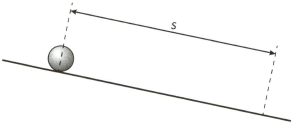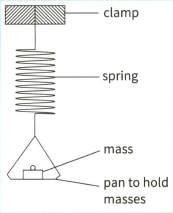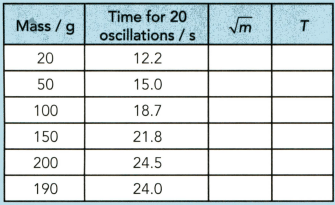Quantity P has a fractional uncertainty p. Quantity Q has a fractional uncertainty q. What is the fractional uncertainty in ?
(a)
(b)
(c)
(d)

Important Questions on Practical Skills at AS Level
The p.d. across a wire of length is given by the formula where is the diameter of the wire, is the resistivity and there is a current in the wire. Which quantity provides the largest contribution to the percentage uncertainty in ?

What is the uncertainty in the following sets of readings? All of them are written down to the smallest division on the instrument used in their measurement.
(a)
What is the uncertainty in the following sets of readings? All of them are written down to the smallest division on the instrument used in their measurement.
(b)
What is the uncertainty in the following sets of readings? All of them are written down to the smallest division on the instrument used in their measurement.
(c)
Electrical experiments usually involve the reading of meters such as the voltmeters shown.

(a) What is the reading shown by each voltmeter, and the uncertainty in each reading?
Electrical experiments usually involve the reading of meters such as the voltmeters shown.

The voltmeters show the readings obtained when they were connected across two wires that were identical apart from their different lengths. The current in each wire was and the length of the wire was in the right diagram and in the left diagram.
Use the scale readings to test the hypothesis that the resistance of the Wire is proportional to length . Consider the effect of the uncertainties on your conclusion.
This apparatus can be used to test the hypothesis that , the time taken for a ball to roll down a plane from rest, is related to the distance by the formula , where is a constant.

The ball is timed using a stopwatch over two different values of . Suggest problems with the experiment and how they might be overcome. You should consider problems in measuring the distance as well as the time. Also note what happens to the ball; it may not roll in the way that you expect.
An experiment explores the relationship between the period of a vibrating spring and the mass in a pan holder. The student is instructed to set up the apparatus as shown here, with a mass of in the pan.

The student is then told to move the pan downwards by approximately and to release it so that it vibrates in a vertical direction. The student is asked to record the time taken for oscillations of the spring, and then to repeat the procedure, using masses between and until She has six sets of readings. Columns are provided in the table for and , the period of the pendulum.
This table shows the readings taken by a student with the different masses.

(a) Copy the table and include values for
